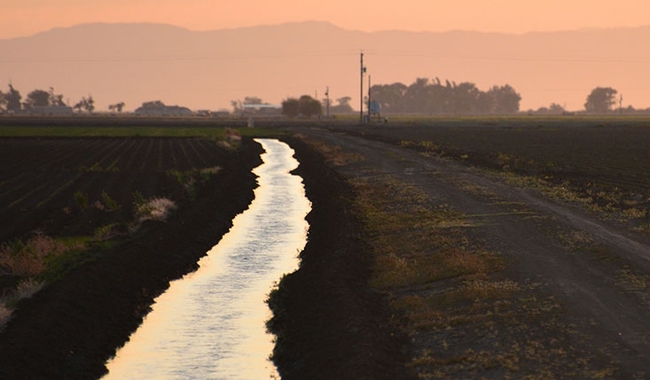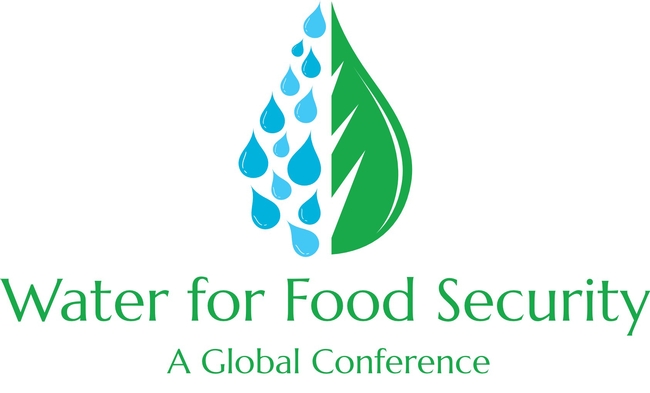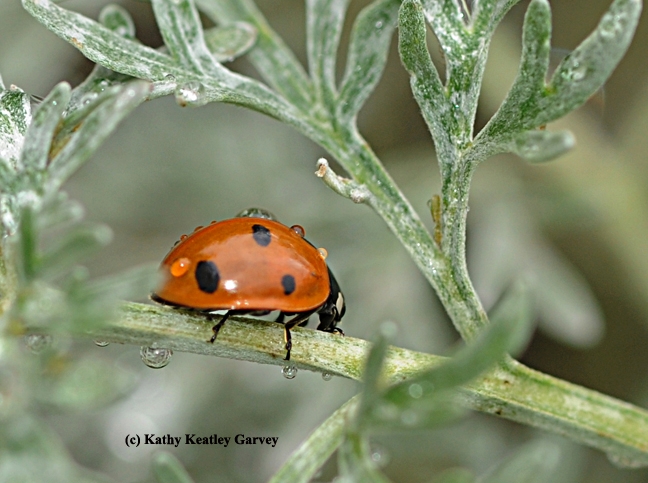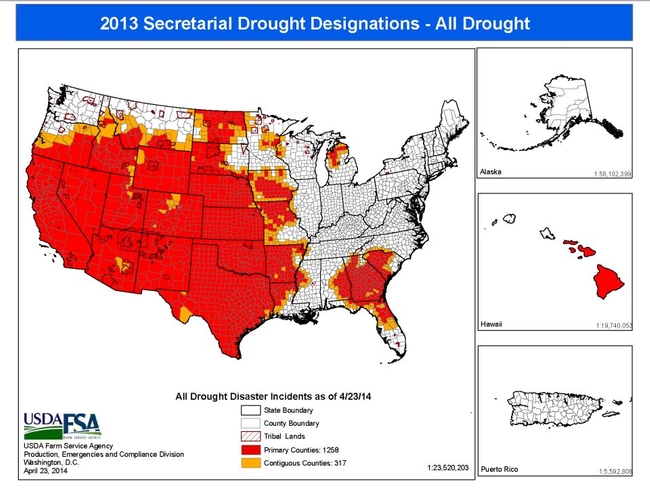
Posts Tagged: California drought
International and California water conferences shine new light on lingering drought

The total cost to the state, according to a new report released Tuesday by the Center for Watershed Sciences (CWS) at the University of California, Davis, is now $2.74 billion and 21,000 jobs.
Some see this as the new normal and new evidence ties it to climate change.
But despite the profound impact on the California agricultural economy, the state is actually doing well. And it's becoming the world's test kitchen for best practices in adapting agriculture to changing water supplies.
A legacy of progressive environmental regulations
“Despite the drought, we have a remarkably robust agricultural system,” says Jay Lund, director of CWS. “If you go back millennia and look at droughts, with a 30 percent loss of water you'd have a 30 percent loss of food production and you'd have 30 percent of the people starving.”
That hasn't happened today, he says, because California agriculture is more diversified than ever and its economy is connected to a world food market that advances despite the drought.
The many tools that UC Agriculture and Natural Resources (UC ANR) and others are deploying to help Californians better adapt today are also being translated into immediate lessons for the developing world.
Stockholm comes to Davis
Starting Sunday, representatives from more than 200 organizations will meet in Stockholm, Sweden, for the World Water Week mega conference. Under the theme Water for Development, they will refine the United Nations' broad Sustainable Development Goals to address the one billion people who would still be without safe drinking water and basic sanitation.
Many partners of UC ANR and the UC Davis World Food Center will be leading some of the numerous discussions, including: CGIAR, the World Bank, the Bill & Melinda Gates Foundation and the UN Food and Agriculture Organization.

Presentations on the Case of California will open two days of panel discussions, ranging from how climate change will impact the cost of water in different regions of the world to how groundwater aquifers can be recharged and how new policies can bolster water markets.
The goal is to seize the momentum now building for an international effort towards #WaterSecurity. By drawing development investors, leading scientists, committed policy makers and global industry partners into one room within the world's number one ag school, the event will set a course of action in sustainably securing water for food and for people across the planet.
Drought Update........How to Save Your Plants Under Drought and Water Restrictions......and Use Graywater!
California is in the midst of the worst drought in decades. But you can save your valued trees and landscape plants by following a few simple principles. Watering mature trees deeply just once during mid-summer will keep most species alive, especially if there is a three inch layer of mulch on the top of the soil to keep evaporation down. Be sure to water outward toward the dripline of the tree rather than near the trunk. Keep weeds out of your garden; they will win the water fight. Don't fertilize your landscape during the drought and avoid ripping out your current landscape in the middle of summer to replace it with a drought tolerant one; young plants require more water than established landscapes, and more frequent irrigations. For more information on how to reduce water use in your landscape and garden and to learn more about using graywater from your washing machine to irrigate your landscape click on this link. http://cesanbernardino.ucanr.edu/Drought_Resources/ Janet Hartin, Environmental Horticulture Advisor, University of California ANR Cooperative Extension, San Bernardino, Riverside, and Los Angeles Counties.
5 key facts about the California drought—and 5 ways we’re responding to it
Drought has gripped much of the western U.S. this year, with a particular stranglehold in California. In 2014, the majority of the state was classified as experiencing “extreme” to “exceptional” drought. Even recent large storms, while welcome, have not made much of a dent in the state's water deficit after several hot, dry years. This drought, ongoing for three years and counting, presents several complex, important issues:
- Reliance on Snowpack: California's current water infrastructure depends largely on snowpack. But this dependency will pose significant challenges in the future. Unlike the majority of the U.S., California has a Mediterranean climate with wet winters and dry summers. It uses the Sierra mountains as a natural reservoir: The snow gathers there during the wet season and continually melts during the warmer months, supplying much of the state with water during the summers. If there isn't an adequate amount of snowpack, water storage and delivery will become huge issues. Even with recent rains, many of the reservoirs continue to hover at low levels.
- Climate Variability: We are learning more about California's climate from paleoclimate research (the study of past climates). For example, Lynn Ingram at the University of California, Berkeley found that the state previously experienced periods of prolonged drought. Professor Ingram's research suggests that we may be entering another period of dryness, the likes of which has not been seen in at least 500 years. Her research also shows that some portions of the state have undergone droughts that lasted decades. In fact, the last 150 years or so have likely been some of the wettest in California's history. And it's in that time period that most of our large dams (and other water infrastructure) was built. More recently, scientists Daniel Griffin and Kevin Anchukaitis used soil moisture to measure drought. They found the 2011-2014 period to be the driest on record in about 1200 years. These paleoclimate studies are helping us understand California's highly variable climate, which can help guide water management efforts. Predicting how long this drought will last, however, remains a challenge.
- Climate Change: In addition to climate variability, all signs indicate that global climate change is exacerbating the drought. While it's difficult to tease out cause and effect, we do know that we are seeing less snow in the mountains and less fog in the Central Valley. We are also seeing fewer big winter storms, which we rely on for our year-round water supply. In addition, 2014 is almost certain to go down as California's hottest on record, complicating the already dry conditions. For example, Griffin and Anchukaita (cited above) found that California's reduced precipitation has been compounded by increased temperatures.
- Groundwater Usage: In 2014, the agricultural community relied quite heavily on groundwater to get through the drought. They turned to groundwater because surface water allocations were greatly reduced. Many farmers pumped groundwater from old wells, dug their wells deeper, or created new wells. Research from UC Davis estimated agricultural economic losses due to the drought to be around $2 billion. These losses would have been much, much higher without groundwater. A long-term look at groundwater depletion led by Jay Famiglietti, a scientist at the University of California, Irvine and NASA, found that high levels of long-term groundwater depletion has caused land to sink in agriculturally intensive areas, such as the Central Valley. Homeowners in these areas have seen their residential wells run dry. Unable to afford digging deeper, they've replaced well water with trucked in or bottled water.
- Effects on People and Animals: Not only is California the most populous state in the U.S., it's also home to Central Valley, a major supplier of the world's food. Both city-dwellers and farmers are trying to find ways to conserve. Farmers continue to work on more efficient methods of irrigation, and urban residents are being encouraged to reduce the amount water used on landscaping, which typically accounts for 50% or more of household water usage. In addition, some areas of the state where people have been the hardest hit are also the poorest, creating cumulative stressors and threatening livelihoods. Furthermore, wildlife and ecosystems have been severely impacted by the drought. For example, the endemic Coho salmon is on the brink of extinction and tricolored blackbirds have just been listed as an endangered species.
How can California even start to cope with its drought? How can it become resilient to future droughts in an arid climate? The oft-repeated phrase that crisis is an opportunity has a ring of truth to it. Although the issues are complex, there have been some achievements: This year has seen quite a bit of movement—political and otherwise—toward developing more resilient water supplies.
- Groundwater Legislation: Earlier this year, Governor Jerry Brown signed legislation mandating “sustainable groundwater management,” though the law leaves local entities to define that idea further. While some local agencies have been managing groundwater at a regional level for some time, this will be the first coordinated, statewide effort. However, even in groundwater basins that the state has deemed high- or medium-priority areas, it will take time to establish the agencies responsible for groundwater management. They will then have until 2020 or 2022 to develop a groundwater sustainability plan, and the plan will just be the beginning of the management process.
- Spending on Water Projects: This November, Californians voted to pass a $7.5 billion water bond that will fund a variety of projects. Over a third of that bond has been allocated for water storage. The specifics of the bond spending were left quite vague. The law notes only that the funds will go to a mixture of surface storage (e.g., dams) and groundwater storage (e.g., managed aquifer recharge). Like the groundwater legislation, the water bond projects may take years—even decades—to be implemented. Research and community input will be needed to understand which projects make the most sense and to decide where they should go.
- Water Independence: Over the last decade, particularly in southern California, there has been a growing focus on “water independence.” Instead of relying on water transfers from wetter parts of the state, major urban centers such as Los Angeles and San Diego have worked to invest in water that can be supplied locally. Los Angeles, for example, is rethinking how to use storm water. The water that used to clog up the drainage system during large storms is now considered a resource, harnessed through the use of permeable pavements and rain gardens, which help to recharge groundwater after a storm.
- Adapting to Variable Water Supply: Due to the growing recognition of how variable our climate is, researchers, growers, and communities are looking toward more resilient approaches to managing water. For example, the state has developed an adaptation strategy for water, which stresses the importance of efficiency in the urban and agricultural sectors, advances the concept of integrated regional water management, and focuses on improving water and flood management systems.
- Community Awareness and Support: People are banding together to support each other through this drought. The state's universities have been holding workshops and offering training opportunities for communities hit hard by drought, agriculture and ranching. People are starting to realize the scale of change necessary and are joining together in non-traditional alliances. Journalist Brett Walton noted that the success of a water recycling effort in Southern California over the last 20 years was not just a technological feat, but a testament to human partnership.
The million dollar question now is how wet 2015 will be. Most predictions are pretty dire. There were hopes that the El Nino weather pattern might pull us out of the drought, but they seem to be fading. Even in the midst of a series of storms, state water managers note that we would need 150 percent of our average precipitation to recover from the drought. Long-range weather predictions are notoriously tricky. Although we hope for rain, we are actively planning for another dry year, as we should be.
As Wallace Stegner wrote, “One cannot be pessimistic about the West. This is the native home of hope.” Regardless of whether this particular drought continues, it's clear that droughts will always be a part of life in California. Preparing for that reality is one of the most hopeful actions we can take.
Further Reading:
- Severe Drought Has U.S. West Fearing Worst by Adam Nagourney and Ian Lovett, The New York Times
- Zero Percent Water by Alan Heathcock
- Depleting the Water by Lesley Stahl, 60 Minutes
- When the Snow Fails by Michelle Nijhous, National Geographic
- California drought: Scientists puzzled by persistence of blocking ‘ridge' by Gloria Goodale, The Christian Science Monitor
- California drought: Past dry periods have lasted more than 200 years, scientists say by Paul Rogers, San Jose Mercury News
- California Drought Saps Water Reserves Above and Below Ground, Says Satellite Data by Brett Walton, Circle of Blue
- Amid drought, California and other Western states gird for a landmark year in forest fires by Reid Wilson,Washington Post
- The Connection Between California's Drought and Climate Change by Molly Samuel, KQED Science
- California Drought Most Severe Dry Spell in at least 1,200 Years by Alex Emslie, KQED Science
This article was originally published at Hippo Reads. Read the original.
What's That Wet Stuff?
What's that wet stuff falling from California skies? Could it be the "R" word, rain? Or...

Rain drops falling on a lady beetle, aka ladybug. (Photo by Kathy Keatley Garvey)
Drought talk draws ranchers, researchers and climatologists
California's severe drought is entering a fourth year. With that, scientists met with ranchers to give background and gain feedback on a key climate indicator: the U.S. Drought Monitor.
The November 7 workshop held at the University of California, Davis, and webcast to 15 satellite locations across the state posed questions to a panel of experts who help publish the weekly analysis. UC Davis researchers also discussed new findings from in-depth rancher interviews along with strategies for maintaining the nutrition of cattle during the water shortage.
Read the full article at the UC Davis Department of Plant Sciences.
“We learn a lot when times are tough,” said Rick Roberti, a cattle and hay rancher who attended the workshop. “We're never going to have the water we need. So we might as well learn now how to deal with it.”
In 2012, the second year of California's drought, more than 2,500 of the nation's 3,000 counties qualified for disaster loans, due to designations made through the Drought Monitor.
"You see the grass that we had then and the grass that we have now and it's nothing to compare to," says rancher Antonia Suenz of Marysville, California. "The climate is changing."
California state climatologist Mike Anderson showed that only 1924 saw less rain than this year, but 2014 has had far higher temperatures: “So not only are you dealing with lack of water, you're dealing with Mother Nature increasing the demand for what water you have.”
Listen to more of this conversation with Anderson at California Drought Watch.






